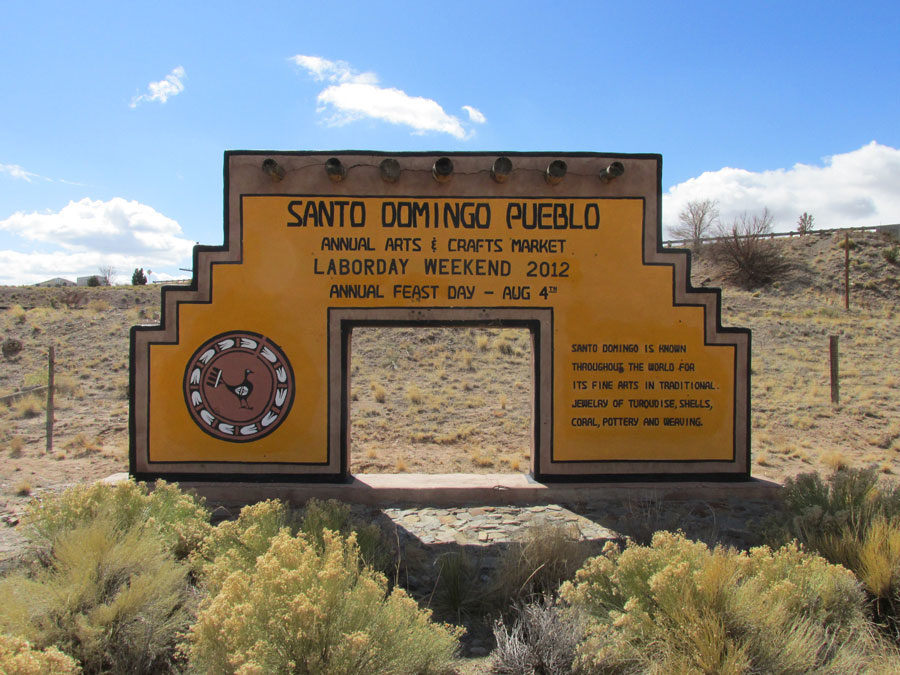Kewa: A Year In Holidays
January 17, 2019
As many students know, New Mexico’s pueblos are different from its cities. Santa Fe High doesn’t have that many students who are from pueblos, but sometimes we do go home for holidays that we celebrate or have traditions that are on school days and we have to take off. Many students and teachers forget this. Some traditions are open to the public, and some are no longer held at certain pueblos, like the horse games.
Easter is fun when everyone’s involved. People make meatless chile with eggs. It tastes really good. Anything with meat, we substitute with something else for that weekend. People even go camping or take their family to parts of private land they own for easter egg hunting. During spring break, the pueblo schools and Santa Fe Indian School have two weeks off from school due to traditional events.
The horse games are still held at Santo Domingo, which we call “Kewa,” in the summer.
The horse games mostly consist of men on horses since women are not allowed to race. (For foot races, all ages and genders are allowed to race for prizes.) The men race as two people hold two log poles that hold a live chicken. The person who gets the chicken then races to try to get the chicken to his family before someone else takes it away. The person can even hit the other men with the chicken, which causes feathers to fly and claws to get into the longsleeve shirts of the men.
For a while, the games weren’t open to the public ever since PETA got involved. An animal-rights activist filmed an event, which is against the rules. The video got out and caused a problem, but that was soon resolved. Some natives who live outside the pueblo weren’t allowed back in to watch the games due to this. So, only some outsiders are allowed to watch the games.
One tradition that both outsiders and Natives can remember is the August 4th Green Corn Dance.
This day is when we take in other people — friends, strangers or family — and feed them, along with showing them our culture and having fun with them at the carnival that lasts for three days. Anybody can go to any house to eat and even take food home. Visitors can have fun and meet people at the carnival and possibly make a good friend.
According to the official Santo Domingo website, August 4 is the feast day of St. Dominic, patron saint of the historic Indian pueblo, and more than 1,000 Santo Domingo natives join in on a presentation of the colorful Green Corn Dance. To read more about August 4th, please follow this link: http://santodomingotribe.org/feast-saint-dominic-august-4th-2017/
Every year on Labor Day weekend, we have booths that sell many items, such as handcrafted jewelry, sugar canes, native dolls, etc., and even food and drinks. Many natives go down to Santo Domingo to sell their goods. Some non-native people even sell paintings, photographs and drawings.
Christmas is really fun. Despite it feeling like hell froze over, it’s really fun to watch the buffalo dances. Even when watching, people cook and hang out with friends and family that come over to the house. People take food home and even sweets. People come to the house and open presents with them and maybe even bring presents over to see the reactions on their friend’s or relative’s face since they probably haven’t seen them in years.
On Christmas there are also parades going down the road. They toss out candy, toys and sometimes presents that people can catch. Little kids can take part in it and they have a lot of fun. Some people even take people from the sides where they’re watching to dance with them. It’s fun to see the parade and see many people both new and familiar.
A lot of traditions are part of the native life. Some non-natives forget that. But others want to learn about the Native Americans and how they live or lived, so they join us.



Jeannie • Jan 6, 2020 at 1:53 pm
Hey, Trishawna…. i’m so happy to find your article. I learned a lot and made me think back to a summer when I was able to attend the Corn Dance. I stayed for a couple hours just feeling the heartbeat of the drums and songs. I visited the shrine to Our Lady and a man invited to sprinkle corn meal and say a prayer, then he invited me to eat at his family’s house. It was a beautiful solemn day that I treasure. I had come from Boston, MA. That was about 12 years ago.